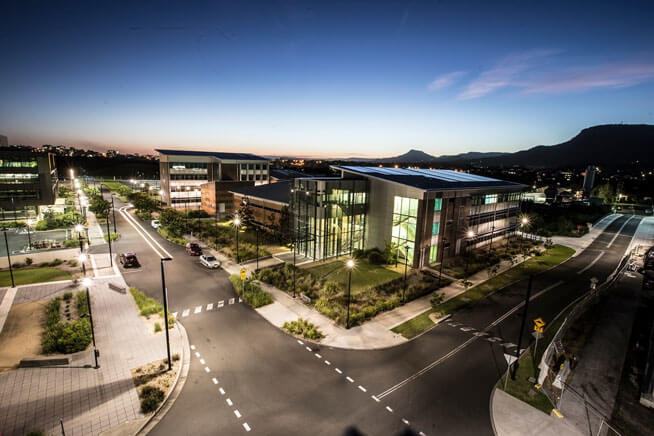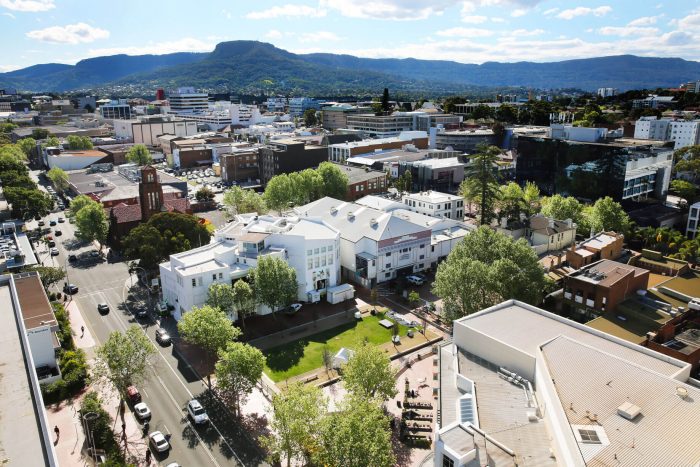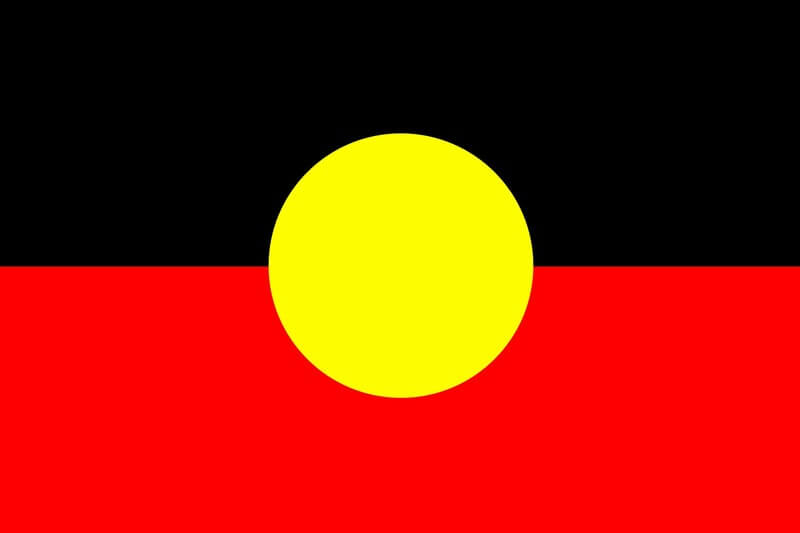A city transformed: Wollongong positions for digital revolution

Close cooperation with stakeholders and technology focus at heart of smart-city strategy.
Outstanding collaboration between the Wollongong region’s councils, the University of Wollongong (UOW), peak business groups and industry is driving innovation in the Illawarra–Shoalhaven and strengthening its economy.
Wollongong, 80 kilometres south of Sydney, is a case study in how councils are working with universities and other stakeholders across their region to create industries and jobs, modernise economies and quicken smart-city transformations.
‘Wollongong can become one of the world’s great regional smart cities,’ says Wollongong City Council Economic Development Manager Mark Grimson. ‘We are embracing the digital revolution, supporting research and thinking globally. The result is more companies choosing to co-locate and invest in Wollongong; greater opportunity and jobs; and a stronger community.’
The region’s smart-city strategy extends across the Illawarra–Shoalhaven, which includes Shoalhaven City Council, Kiama Municipal Council, Shellharbour City Council and Wollongong City Council. Through the Illawarra Shoalhaven Joint Organisation, the region’s four councils and two regional development authorities endorsed a Smart Region Strategy in June 2018.
Thirty representatives across government, academia and industry worked on the strategy to understand the region’s unique strengths, opportunities and challenges; build a shared vision; and crowdsource ideas and initiatives to create a leading smart region.
The strategy has six pillars: economy, mobility, living, governance, environment and community. Projects include:
- smart work hubs across the region that facilitate telework and drive innovation
- an integrated smart water-management system that helps the region better plan for and respond to significant rainfall events and natural disasters
- a driverless shuttle bus in Kiama to improve mobility options for an ageing population
- a health and wellbeing precinct (due for completion in 2022) at UOW’s Innovation Campus that will inject $600 million into the region’s economy and address key health and liveability issues
- Vision Illawarra, a digital information dashboard providing evidence-based planning and integrated development across the region
- a Digital Living Lab that is a testbed for new smart solutions and long-range, wide-area network (LoRaWAN) that uses sensors to capture data, and positions the region for the Internet of Things (IoT), where devices talk to each other online.
These and other projects highlight the region’s smart-city momentum and the benefits of a coordinated, future-focused planning approach.
‘Wollongong itself is being reinvented from a city traditionally known for steel and coalmaking to a knowledge services hub, globally connected trade hub and leading university city,’ says Grimson.
Higher education underpins Wollongong’s success. The region’s longstanding relationship with UOW reinforces the benefits of councils and universities working together on regional issues. Local councils have funded several UOW projects and have drawn on the university’s expertise in smart-city planning.
UOW’s SMART Infrastructure Facility is leading several projects in the Illawarra Shoalhaven Smart Region Strategy, and helping develop and commercialise other innovations.
Established in 2011, the $62 million Facility’s focus on regional innovation and council collaboration is unique. ‘We’re capturing data across the region and working with councils to solve complex problems,’ says UOW Senior Professor Pascal Perez, part of the
Facility’s leadership team. ‘Through an evidence-based approach and latest technologies, we can innovate infrastructure and help the community and environment.’
Perez says UOW has an important role in regional innovation. ‘Great global innovation clusters often form just outside of large capital cities and have a high-performing university at the centre of the ecosystem,’ he says. ‘In Australia, larger innovation clusters are forming in Wollongong, Newcastle, Geelong and parts of South East Queensland. Regional universities are playing a key role.’
The SMART Infrastructure Facility’s work on Vision Illawarra is an example. UOW combines publicly available data on the region’s economy, demographics, transport and utility usage through a regularly updated online dashboard. The data is used to project the region’s needs and guide council decision-making.
UOW’s Digital Living Lab helps prototype smart-city innovations. Projects include a 3D Smart Sensing Model that uses sensors and IoT technology to provide 3D modelling of temperature, motion and other variables in real time. The model is part of a collaboration between SMART, Nube IO and Devika.
Emerging tech company Briometrix is working with the Facility to develop smart wheelchairs that use sensors to capture data and map optimal routes for users. The app visualises the terrain from the user’s perspective, tracks journeys and displays interactive maps.
The Facility is also developing machine-learning technology to count people and cars at key locations via IoT technologies. The Smart Cities, Smart Liverpool, Smart Pedestrian Project, developed for Sydney’s south-west, could help the Illawarra– Shoalhaven plan for population growth and mobility.
The Facility’s work on an IoT network for the region has great promise. Created by UOW, the free-to-air network covers 90 per cent of the region. The plan is to install sensors on more council facilities, such as wastewater drains, to better understand the region’s needs in real time and optimise council infrastructure for the community.
Other projects being developed through the Facility include apps and drones to prevent shark attacks, 3D-printed surfboard fins, a campus safety app, smart hydrants, and Binary Beer’s smart kegs that monitor beer quality and locations.
‘These are potentially game-changing projects,’ says Perez. ‘In time, they could lead to new industries, companies and jobs in Wollongong, and add to the region’s technology capability.’
UOW’s success in teaching and research is another Wollongong asset. UOW, rated in the top two per cent of world universities, has 34,000 students and offers 340 degrees.
UOW’s Innovation Campus, an award-winning, internationally recognised business park that includes some of Australia’s largest commercial and not-for-profit organisations, forms part of a triangle extending to UOW and the southern part of Wollongong’s city centre.
As the region’s capital, Wollongong is an important source of job creation. The CBD has undergone a significant transformation, with $1.3 billion in investment since 2012 and another $600 million in the pipeline.
Smart-city approach complements existing strengths
Wollongong has several industry attractions. The city is a 90-minute drive to Sydney’s CBD, and its proximity to Sydney International Airport and the planned Western Sydney Airport is another strength.
‘The Illawarra–Shoalhaven is a big market in its own right, and Sydney is just over an hour away,’ says Grimson. The region is New South Wales’s third largest economy, contributing $22.8 billion to the state annually (according to REMPLAN).

A 2015 Deloitte study found that Wollongong is highly competitive in the shared services sector compared to Sydney, with 15 per cent lower salary costs, 50 per cent lower rents and a 95 per cent staff retention rate (compared to 75 per cent in Sydney).
The region’s population is expected to reach 472,000 by 2036, with Wollongong’s population estimated to grow to 254,805 in the next two decades.
Urban densification, congestion and high property prices are expected to continue to encourage more Sydneysiders to relocate to the region. Wollongong houses and units are 35 to 40 per cent cheaper than the greater Sydney average. Thousands of new homes are being built.
‘Wollongong residents benefit from a family-friendly coastal lifestyle and better housing affordability compared to Sydney. They have good local job opportunities or can commute to Sydney,’ says Grimson. About 20,000 residents from across the region commute to Sydney for work.
Wollongong has a fast-growing footprint in the knowledge services sector, including ICT, superannuation and shared services. More companies and government organisations in this sector are co-locating in Wollongong to reduce operating costs and access an expanding, skilled workforce while servicing national and global markets. ICT giant NEC opened its corporate office in Wollongong in 2016 and now employs more than 150 people. International wealth-management firm Mercer employs 600 people. ‘These and other firms are benefiting from our local skilled workforce,’ says Grimson.
Wollongong is also making gains in advanced manufacturing and tourism, and investment in its industrial base is rising. A $75 million investment in Port Kembla, five kilometres south of the Wollongong CBD, has boosted the port’s export capacity. Port Kembla is New South Wales’s largest motor vehicle import hub and grain export terminal, and its second-largest coal export port.
‘Wollongong has come a long way from a city hit hard by the steel downturn in the ’90s, and has a long way to go,’ says Grimson. ‘There’s never been a better time to invest in Wollongong and one of the world’s great emerging smart regions.’
Source: A city transformed: Wollongong positions itself for a digital revolution article featured in Forges Magazine Vol 4 | No 2 | 2018.






